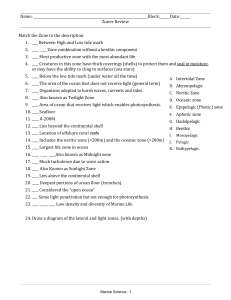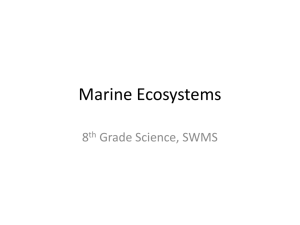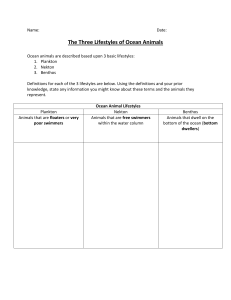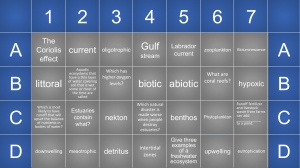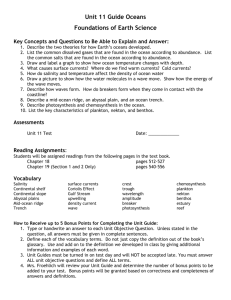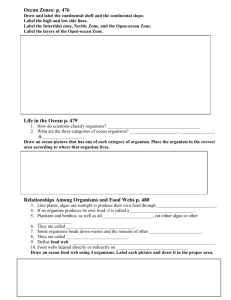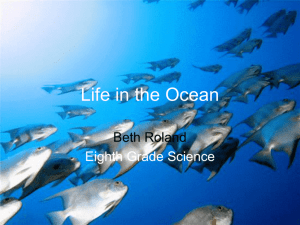Aquatic Ecosystems Study Guide
advertisement
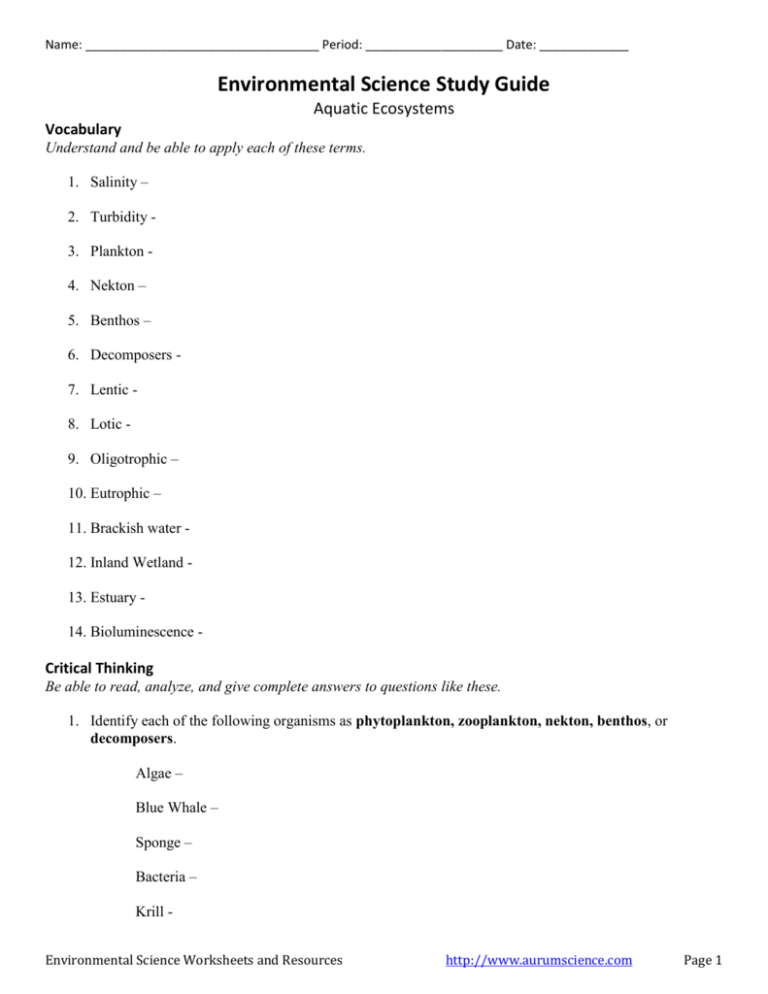
Name: __________________________________ Period: ____________________ Date: _____________ Environmental Science Study Guide Aquatic Ecosystems Vocabulary Understand and be able to apply each of these terms. 1. Salinity – 2. Turbidity 3. Plankton 4. Nekton – 5. Benthos – 6. Decomposers 7. Lentic 8. Lotic 9. Oligotrophic – 10. Eutrophic – 11. Brackish water 12. Inland Wetland 13. Estuary 14. Bioluminescence - Critical Thinking Be able to read, analyze, and give complete answers to questions like these. 1. Identify each of the following organisms as phytoplankton, zooplankton, nekton, benthos, or decomposers. Algae – Blue Whale – Sponge – Bacteria – Krill Environmental Science Worksheets and Resources http://www.aurumscience.com Page 1 2. Plants occupy the bottom or producer level of a food chain in biomes. Which organisms occupy this level in most open-water aquatic ecosystems? 3. Label the littoral zone, limnetic zone, and benthic zone. 4. Which zone in the pond shown above would you expect to see the greatest amount of biodiversity? 5. Which zone would you expect to see the least amount of photosynthesis? What do organisms there survive on? 6. How could you tell, just by looking at a lake, whether it is eutrophic or oligotrophic? If you took a sample of water from each, what would you expect to see under a microscope? 7. What is the difference between streams and rivers? 8. Summarize the differences between each of the areas of a river. Dissolved Oxygen Level Nutrient Level Relative Temperature Salinity Source Zone Transition Zone Flood Plain Zone Mouth / Delta 9. What are the key differences between swamps, marshes, and bogs? 10. Which ecological zone in the ocean has the vast majority of all biodiversity? 11. Describe the types of plants you would expect to find at each of the coastal wetlands. a. Salt Marsh – b. Sea grass bed – c. Mangrove forest – 12. What causes water to rise and fall in the tidal zone? 13. What abiotic factor is primarily responsible for the formation of a rocky shore instead of a sandy shore? 14. What is the source of the sediment that forms each of the different types of sandy shores? a. Black Sand – b. Brown Sand – c. White Sand – 15. Describe the process by which coral polyps and algae create a coral reef. 16. Why would the open ocean be referred to as a “marine desert”? 17. What is the source of energy for food chains found in the photic zone in the ocean? 18. What is the source of energy for food chains found in the benthic zone in the ocean?
